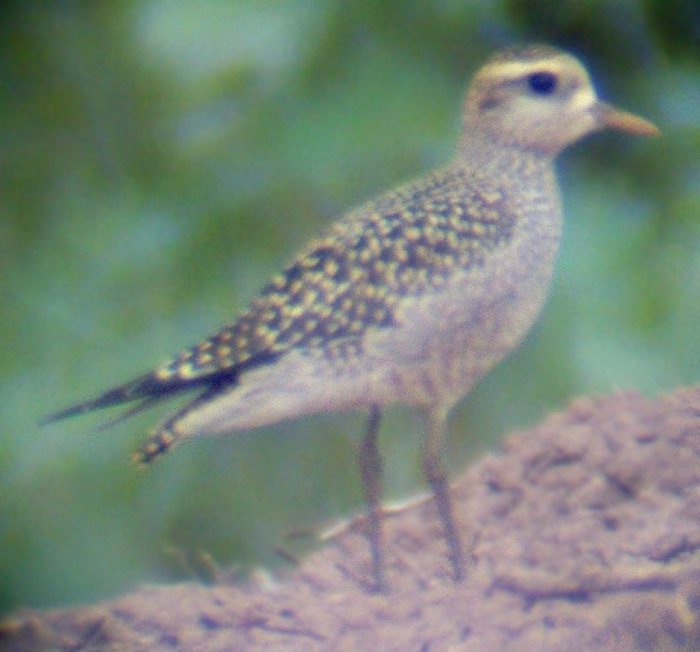 |
 |
|||||||||||||||||||||
|
||||||||||||||||||||||
American Golden-Plover (Pluvialis dominica), Whitewater Draw, Cochise County
This American Golden-Plover was
discovered by Peter Walsh on 25 September 2008 and photographed by Andrew Core on 26 September 2008
at Whitewater Draw.
This species is a casual fall
transient in Arizona and presents an ID challenge, being very similar to Pacific
Golden-Plover (which has only been recorded once in Arizona). The classic
field marks for Pacific Golden-Plover are short primaries that barely project
past the tail, long tertials that reach or exceed the tail, bright golden face
with yellow eyeline and long legs that project just past the tail in flight.
The calls of the species are also quite different. Although initially
identified as a Pacific, analysis of the pictures presented below indicates that
this is a bright juvenile American Golden-Plover.
Andrew Core writes:
"When I first saw this bird, the yellow color really stood out to me. I counted the primaries exposed and came up with three. "Great!" I said, "Pacific Golden-Plover!" Upon returning home and viewing the pictures and hearing from others, I began to look closer.
Primary Projection: In this bird the primaries project well beyond tail. Though in Pacific (Pluvialis fulva) the wings may project some, I could not find any instances of this much projection in P. fulva. This field mark indicated American Golden-Plover (P. dominica).
Number of primaries visible: In the field I counted three, and my pictures were not of sufficient detail to counter this. However, I read that "It is important to note that very close spacing of primary tips 9 and 10... may give the visual impression of a single feather when viewed in the field, and thus lead to an incorrect count." (see http://web.uct.ac.za/depts/stats/adu/wsg/pdf/wsgb-apr2004-golden-plovers.pdf) I have to say, then, that the number of primaries visible in this bird could be three OR four. If three, one is forced to conclude that the p9 and p10 are not closely spaced. Four would fit better with the spacing. This field mark for me was not conclusive.
Tertials: The primaries are prominently exposed past the tertials. Also, the tertials do not come close to the tip of the tail. This fits quite well with dominica, and not at all with fulva.
Color: The bright color which first struck me can be useful to seperate fulva and dominica, but it is not absolutely indicative of fulva. A quick search on flickr.com produced at least two pictures of dominica that matched the Whitewater bird very well. I believe a typical fulva would be even brighter, but the literature suggests there is overlap.
Other marks that fit dominica were the gray chest and the bright color above and behind eye. The bright spangles and fresh looking plumage lead me to believe it is a juvenile. One mark I have not seen discussed is the color of the bill; this bird has a yellow bill with a dark base, and all books and pictures I consulted show only a black bill.
In conclusion, I believe the evidence - particularly the primary extension past the tail and tertials - points to this being a brightly colored juvenile American Golden-Plover (Pluvialis dominica).
I would like to thank Mark Stevenson, John Yerger, Gary Rosenberg, Gavin Bieber and Mike Moore for their help on this bird. Their generous insight made this a educational and rewarding process."

26 September 2008, photo by Andrew Core
All photos are copyrighted© by the photographer
Submitted on 30 September 2008
|
©2005
|
HOME | | | REPORT SIGHTINGS | | | PHOTOS | | | BIRDING | | | JOURNAL | | | ABOUT US | | | CHECKLISTS | | | AZ BIRD COMMITTEE | | | EVENTS | | | LINKS |